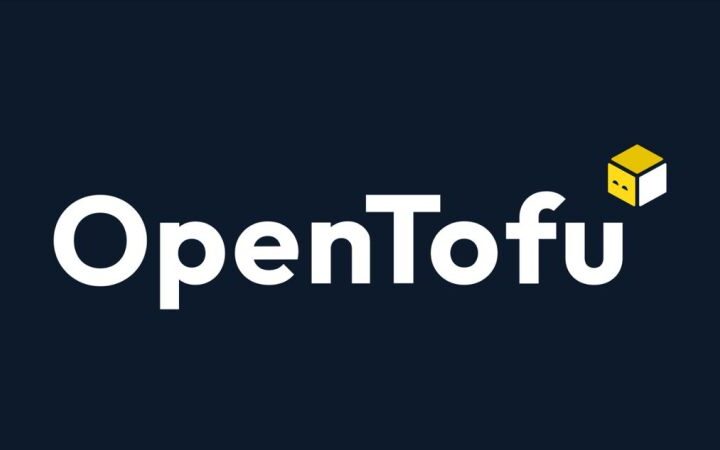
In the world of DevOps and infrastructure management, the concept of Infrastructure as Code (IaC) has gained immense popularity. It allows for the provisioning, configuration, and management of infrastructure in a more automated and code-centric fashion. One tool that's been making waves in this space is OpenTofu, an open-source IaC framework that brings a fresh approach to infrastructure management. In this blog post, we will explore what OpenTofu is, how it compares to Terraform, how to install it, and the benefits of using OpenTofu for your infrastructure needs.
Comparing OpenTofu with Terraform:
Before delving into the details of OpenTofu, let's take a moment to compare it with Terraform, one of the most popular IaC tools. While Terraform is renowned for its robust and comprehensive features, OpenTofu distinguishes itself with its open-source nature and a focus on simplicity. It offers a more lightweight and beginner-friendly alternative for those looking to manage infrastructure as code without the steep learning curve.
What is OpenTofu?
OpenTofu is a derivative of Terraform, introduced through the collaborative efforts of OpenTF, with support from notable entities such as Gruntwork, Spacelift, Harness, Env0, Scalr, and more. This initiative was sparked by HashiCorp's transition from an open-source license to the BSL. OpenTofu serves as an open-source rendition of Terraform, providing a robust alternative to HashiCorp's Terraform, while also extending and enhancing Terraform's established principles and features.
What was the motivation behind the development of OpenTofu?
The development of OpenTofu was motivated by the need for an open-source alternative to Terraform, spurred by HashiCorp's transition from an open-source license to the BSL (Business Source License). OpenTofu was initiated by the OpenTF project and supported by various organizations, including Gruntwork, Spacelift, Harness, Env0, Scalr, and others. It aims to provide a freely accessible and community-driven infrastructure as code solution while expanding upon Terraform's core concepts and functionalities.
For further details on this topic, you can explore the articles regarding:
Core Tofu Functionality can be driven by :
https://opentofu.org/docs/intro/core-workflow/
OpenTofu, being an open-source Infrastructure as Code (IaC) tool, has a variety of use cases across different domains and industries. Here are some common use cases for OpenTofu:
- Cloud Infrastructure Provisioning: OpenTofu can be used to provision and manage cloud resources across major cloud providers such as AWS, Google Cloud, Azure, and more. It's ideal for creating and managing virtual machines, databases, storage, and networking resources.
- Multi-Cloud Deployment: Organizations that use multiple cloud providers can use OpenTofu to create a unified infrastructure management solution, abstracting the differences between providers and ensuring consistent deployment and management.
- Continuous Integration and Continuous Deployment (CI/CD): OpenTofu can be integrated into CI/CD pipelines to automate infrastructure setup and teardown. This ensures that development, testing, and production environments are consistent and reproducible.
- DevOps Practices: OpenTofu aligns well with DevOps principles by enabling infrastructure as code. This allows teams to automate infrastructure provisioning, configuration, and updates, facilitating collaboration and reducing manual intervention.
- Container Orchestration: OpenTofu can be used to manage container orchestration platforms like Kubernetes, ensuring that the underlying infrastructure and networking are set up correctly for containerized applications.
- Automated Testing Environments: Development and QA teams can use OpenTofu to spin up isolated testing environments on-demand, helping them test applications more efficiently and consistently.
- Disaster Recovery and Backup: OpenTofu can be used to automate the setup of disaster recovery sites and backup solutions, ensuring data redundancy and business continuity.
- Scaling and Load Balancing: OpenTofu enables automatic scaling of resources based on predefined conditions and configurations, ensuring applications can handle increased workloads.
- Compliance and Security: OpenTofu can enforce security and compliance policies as code, ensuring that infrastructure configurations meet organizational and industry standards.
- Hybrid Cloud Deployments: OpenTofu can help organizations manage hybrid cloud environments by providing a consistent approach to provisioning and managing resources across on-premises data centers and public cloud providers.
- Infrastructure Documentation: OpenTofu can generate infrastructure documentation, making it easier to understand and audit the deployed resources.
- Custom Resource Types: OpenTofu's extensibility allows organizations to create custom resource types and plugins to cater to specific infrastructure requirements, such as in-house applications or specialized services.
- Cost Optimization: OpenTofu can help organizations track and optimize cloud infrastructure costs by automating resource lifecycle management.
In summary, OpenTofu is a versatile IaC tool that can be applied to various scenarios where automation, consistency, and efficiency in infrastructure management are essential. Its open-source nature and extensibility make it suitable for a wide range of use cases across different industries like Telecom , Insurance , Pharma etc.
